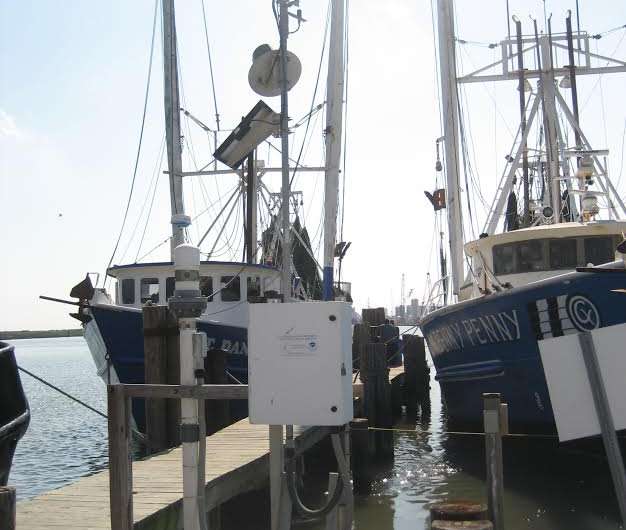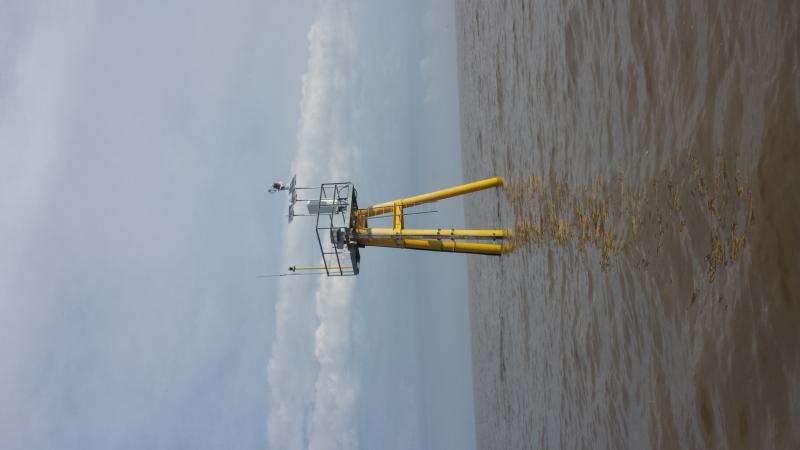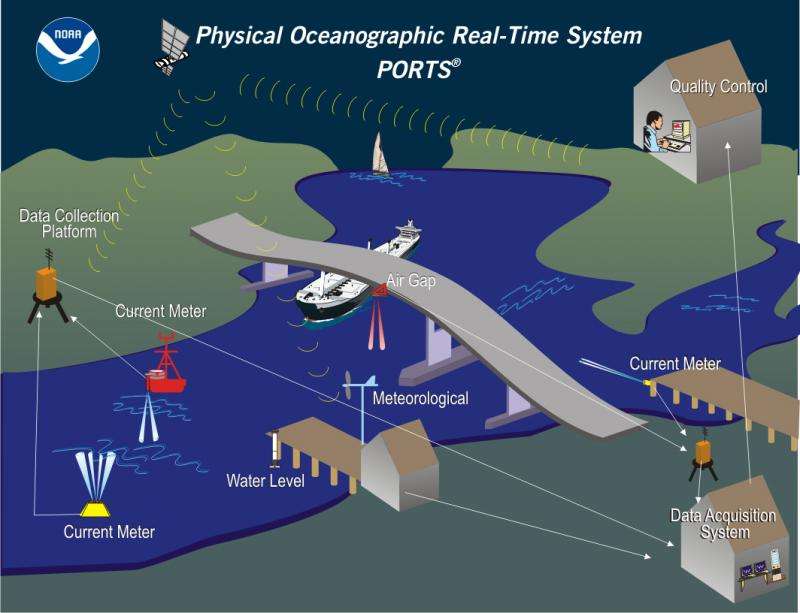Two new environmental observation systems for shippers

Two southeast Louisiana shipping hubs critical to the U.S. economy will see the installation of NOAA's Physical Oceanographic Real Time System (PORTS) this week. The new multi-sensor systems will increase navigation safety and allow for increased efficiency on ships transiting through the Port of Morgan City and Port Fourchon, Louisiana.
PORTS is an integrated system of oceanographic and meteorological sensors that provide mariners with accurate and reliable real-time information about environmental conditions in seaports. By volume, more than 95 percent of U.S. international trade moves through the nation's ports and harbors and NOAA works with local users to tailor the system to the specific requirements of each seaport.
"Real-time knowledge of the currents, water levels, winds and density of the water can increase the amount of cargo moved through a port and harbor and enable mariners to safely use available channel depths," said Rich Edwing, NOAA's Center for Operational Oceanographic Products and Services (CO-OPS) director. "Even one additional foot of draft can substantially increase the profit of a shipment."
Morgan City is a newly established foreign trade destination, while Port Fourchon is one of the nation's busiest energy ports, servicing 90 percent of the deepwater Gulf of Mexico oil and gas industry. Each day, Port Fourchon handles more than 20 percent of the nation's energy supply.

The Port of Morgan City system was dedicated today and is the 24th seaport to join the national PORTS network. This system provides information on water levels, currents, wind speed and direction, air and water temperatures, barometric pressure, and salinity.
"The Port of Morgan City has only recently become a hub for import-export ships. Having this PORTS system will greatly increase the ability of those ships to navigate in and out of our harbor safely," said Port of Morgan City executive director Raymond "Mac" Wade.
Morgan City is at the center of waterborne transportation with increasing traffic traveling between the southwestern United States and the Upper Mississippi River Valley. By using the Morgan City-to-Port Allen alternate route rather than the Intracoastal Waterway via New Orleans, ships can save approximately 340 miles round trip.

The Port Fourchon dedication will be on May 13, making it the 25th seaport to use PORTS. Port Fourchon serves as a commercial and recreational fishing center, foreign cargo shipping terminal, and a desirable area for recreation and tourism.
"Because our seaport services so many oil tankers, an accident could have a detrimental impact on the environment in our area. PORTS is critical for protecting not only the goods and services that come in and out of our seaport, but also for protecting the environment from damage caused by an oil spill," said Port Fourchon executive director Chett Chiasson.
In 2014, marine cargo activity generated approximately $4.6 trillion of total economic activity, or about 26 percent of the nation's $17.4 trillion gross domestic product. Economic benefit studies from four PORTS locations around the U.S. have shown a 50 percent reduction in groundings and $50 million in economic efficiency benefits every year. As such, PORTS is vital to not only the safety of our seaports and vessels, but also the U.S economy.
Provided by NOAA Headquarters

















